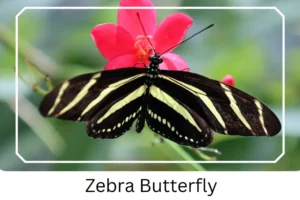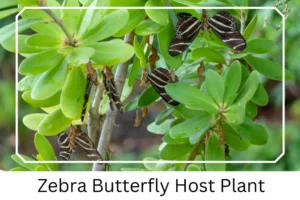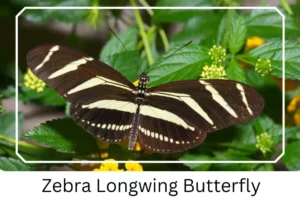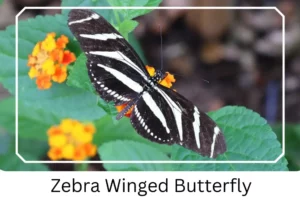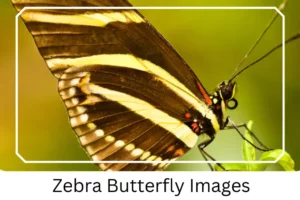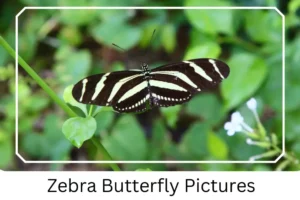Zebra (Heliconius charithonia)
The Zebra Butterfly (Heliconius charithonia), with its distinct black and white striped pattern, is a fascinating creature that captivates the attention of anyone lucky enough to spot it. This butterfly’s unique appearance, reminiscent of a zebra’s coat, is not just for show; it plays a significant role in its survival. Found predominantly in warm, tropical regions, the Zebra Butterfly thrives under the sun, showcasing a blend of beauty and resilience.
Scientific Classification
- Family: Nymphalidae
- Genus: Heliconius
- Common names: Zebra longwing
- Scientific Name: Heliconius charithonia
Overview
Belonging to a group of medium-sized, monomorphic butterflies, the Zebra Butterfly is known for its extended lifecycle and preference for sunny, tropical habitats. Its presence is a common sight in areas ranging from Central and South America to southern Texas and peninsular Florida in the United States, where they are known to migrate further north during the summer months. This butterfly species is not only a marvel of nature’s design but also an integral part of its ecosystem.
Description and Identification
Caterpillar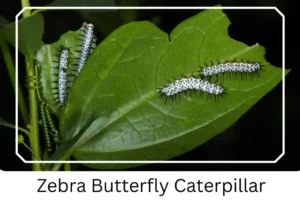
The Zebra Butterfly caterpillar is characterized by its white body adorned with black dots and spikes along the central part. A distinctive yellow head complements its striking appearance, making it a remarkable sight from the very beginning of its lifecycle.
Pupa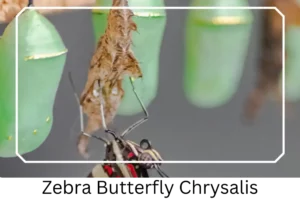
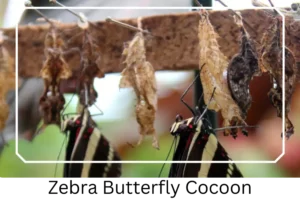
The chrysalis of the Zebra Butterfly ranges from light brown to dull yellow, exhibiting an exceptional ability to camouflage. Suspended in a way that mimics dry, yellow leaves, the nymphs remain concealed from potential predators, showcasing nature’s ingenuity in protection.
Adult Butterfly
Sexual Dimorphism: Both male and female Zebra Butterflies exhibit similar physical appearances, making it challenging to distinguish between the sexes based on looks alone.
Color and Appearance: The sleek hind wings of the adult Zebra Butterfly are marked by simple, elongated lines on a jet-black base, accented with narrow white and yellow stripes. The ventral sides feature paler markings with distinctive red spots, adding to their mesmerizing appearance.
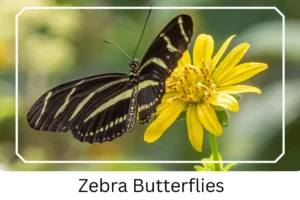
![]() Average Wingspan: The wingspan of the Zebra Butterfly ranges between 72 to 100 mm (2.83 – 3.93 in), allowing for a display of their striking patterns in full glory.
Average Wingspan: The wingspan of the Zebra Butterfly ranges between 72 to 100 mm (2.83 – 3.93 in), allowing for a display of their striking patterns in full glory.
Flight Pattern: Their flight is quick and erratic, often described as a ‘dancing’ pattern, unique to this species, adding an element of grace to their already captivating presence.
Eggs

Zebra Butterfly Eggs
Zebra Butterfly eggs are a light yellow color, typically laid individually or in small clusters of 5 to 15. This careful placement ensures the next generation’s survival from the moment of conception.
Quick Facts | |
| Distribution | Found throughout Central and South America, southern Texas, and peninsular Florida; migrates northward in summer. |
| Habitat | Prefers moist forests, tropical hammocks, edges, and fields. |
| Lifespan of Adults | Can live up to six months. |
| Host Plants | Utilizes various passionflower species for larval nourishment. |
| Adult Diet | Primarily consumes pollen and nectar from passionflowers. |
How to Identify Zebra Butterfly?
Identifying a Zebra Butterfly is an engaging experience, marked by the observation of their striking black and white patterns that mirror the coat of a zebra. Look for medium-sized butterflies with narrow hind wings, adorned with long, linear patterns on a dark base interspersed with white and yellow stripes. Their flight is distinctive; quick and seemingly erratic, yet graceful, resembling a dance through the air. When resting, the paler markings and red spots on the ventral side of their wings become more visible, providing another identifying feature. Observing these butterflies in their preferred sunny, tropical habitats, especially around passionflower plants, can increase the likelihood of spotting them.
Did You Know?
- The Zebra Butterfly’s bold wing coloration serves as an aposematic signal, warning predators of their toxicity.
- At night, Zebra Butterflies engage in communal roosting, gathering in groups of up to 60 adults for protection.
- Consuming pollen allows these butterflies to synthesize cyanogenic glycosides, making them toxic to predators.
- In 1996, the Zebra Butterfly was designated the official butterfly of Florida, recognizing its beauty and ecological importance.
Conclusion
The Zebra Butterfly is more than just a visually stunning creature; it is a symbol of adaptability, survival, and the intricate balance of nature. Through its lifecycle from a uniquely adorned caterpillar to a striking adult, it plays a crucial role in its ecosystem. Observing these butterflies in their natural habitat offers a glimpse into the diversity and complexity of life, reminding us of the importance of conservation and the beauty that exists in the natural world.
Zebra Butterfly Pictures

Scientific Classification

- Family: Nymphalidae
- Genus: Heliconius
- Common names: Zebra longwing
- Scientific Name: Heliconius charithonia

